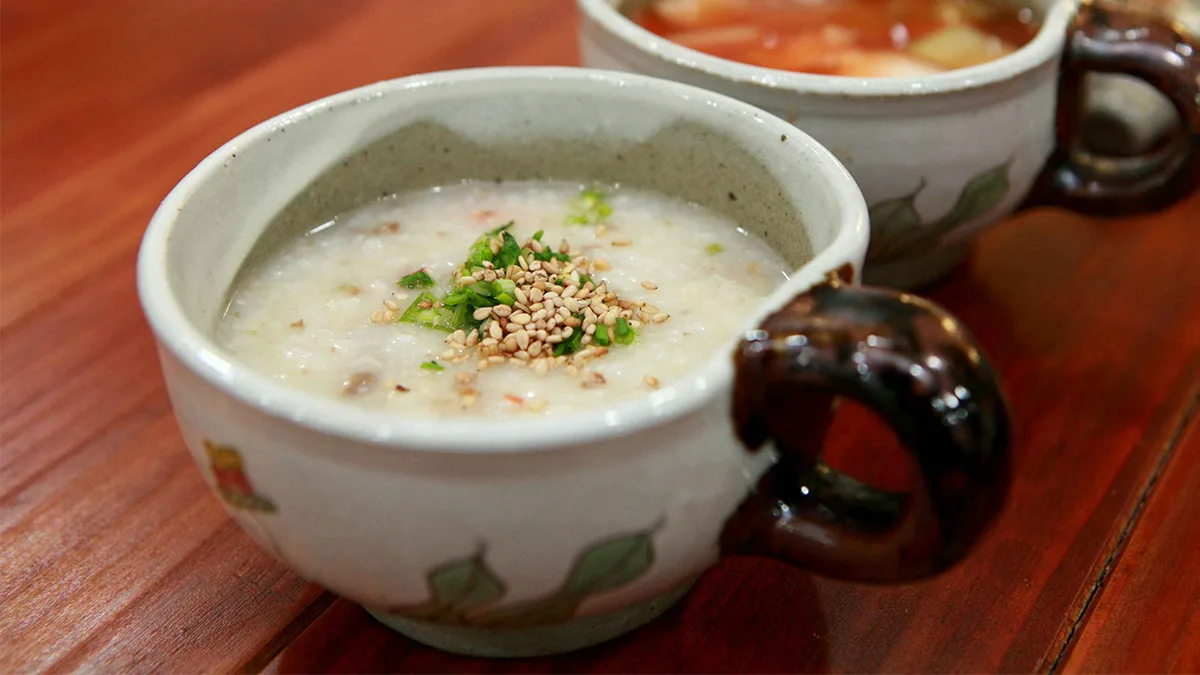No products in the cart.
Sogogijuk || 소고기죽 Leave a comment
Characteristics of Sogogi Juk
- Soft Texture: Made with thoroughly cooked rice and finely minced beef, making it easy to digest.
- Nutritious: Provides a good source of protein from the beef and carbohydrates from the rice, making it a good option for nutritional recovery.
- Versatile Ingredients: Besides beef, you can add various vegetables, seafood, or other ingredients to enhance the flavor and nutritional value.
- Simple to Make: Relatively simple and straightforward to prepare.
Types of Sogogi Juk
- Basic Sogogi Juk: The most basic version, made with just rice and beef.
- Vegetable Sogogi Juk: Includes vegetables like carrots, onions, and zucchini for added nutrition and flavor.
- Mushroom Sogogi Juk: Features various mushrooms like shiitake or oyster mushrooms for a fragrant and earthy flavor.
- Abalone Sogogi Juk (Jeonbok Sogogi Juk 전복 소고기죽): A more luxurious version with abalone, often considered a restorative dish.
Basic Sogogi Juk Recipe
Ingredients:
- 1/2 cup rice
- 100g ground beef
- 4 cups water
- 1 tbsp sesame oil
- 1 tbsp Korean soy sauce (Gukganjang 국간장)
- A pinch of salt
- Chopped green onions (for garnish)
Instructions:
- Rinse the rice thoroughly and soak it in water for about 30 minutes. This helps it cook more evenly and quickly.
- Remove any excess blood from the ground beef using paper towels and finely mince it if it’s not already ground finely enough.
- Heat sesame oil in a pot over medium heat and sauté the ground beef until it’s lightly browned.
- Add the soaked rice to the pot and sauté it with the beef for a couple of minutes until the rice becomes slightly translucent.
- Pour in the water and bring the mixture to a boil over high heat.
- Once boiling, reduce the heat to low, cover the pot, and simmer for about 20-30 minutes, or until the rice is fully cooked and has a porridge-like consistency, stirring occasionally to prevent sticking.
- Season with Korean soy sauce and salt to taste.
- Serve the juk hot, garnished with chopped green onions.
Tips for Making Delicious Sogogi Juk
- Soaking the Rice: Soaking the rice is crucial for a smooth and even texture.
- Low Simmer: Simmering over low heat prevents the rice from burning or sticking to the bottom of the pot.
- Stirring: Stirring occasionally ensures even cooking and prevents sticking.
- Adjusting Water: Adjust the amount of water depending on your desired consistency. For a thinner juk, add more water; for a thicker juk, use less.
- Adding Other Ingredients: Feel free to add finely chopped vegetables, mushrooms, or other proteins to customize your juk.
Storage:
- Leftover juk can be refrigerated for up to 3 days.
- When reheating, add a little water to restore its original consistency.
Additional Information:
- Sogogi Juk is often given to people who are sick, infants (as a first food), and elderly people because it’s easy to digest.
- You can substitute other meats like chicken or shrimp for the beef.

This image is created using data from the Korea Tourism Organization's Photo Korea, which is open under the Public Domain License. You can download these images for free from phoko.visitkorea.or.kr. (본 이미지는 공공누리 제1유형으로 개방한 ‘한국관광공사 포토코리아'의 데이터를 이용하였으며, 해당 저작물은 ‘phoko.visitkorea.or.kr’에서 무료로 다운받으실 수 있습니다.)




















































